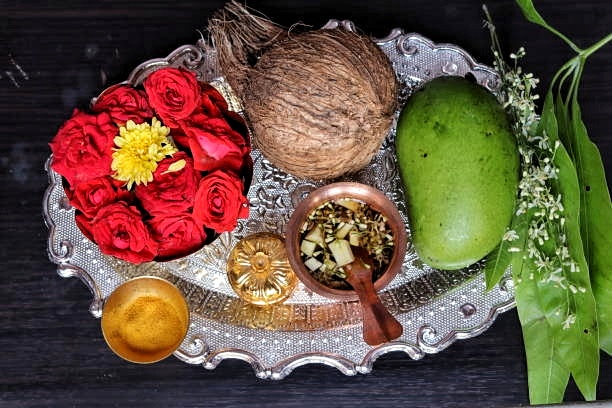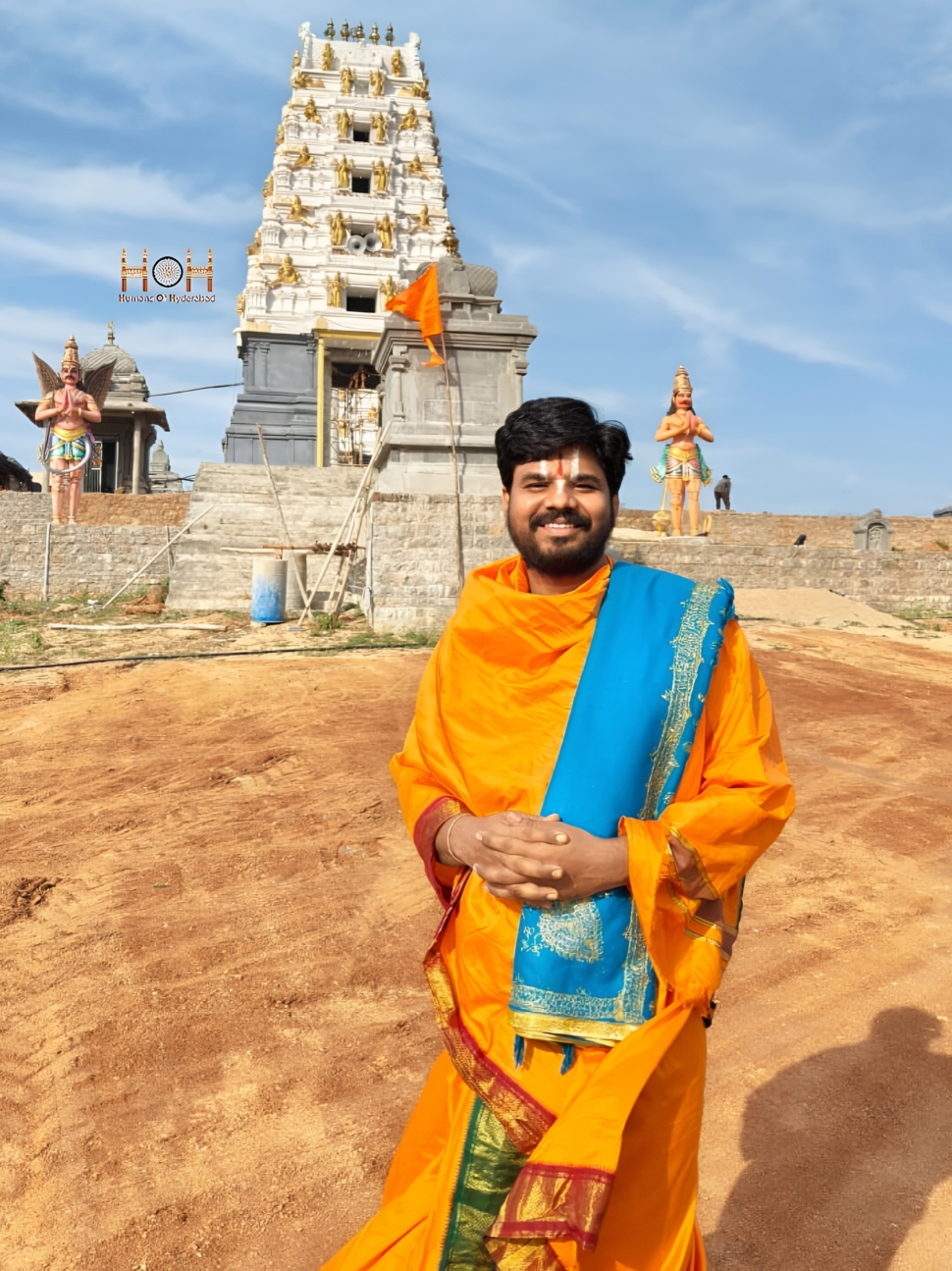From a young age, I was drawn to the sacred customs that have been passed down through generations. My schooling and intermediate education were in Miryalaguda, after which I joined Chinna Jeeyar Swamy Veda Pathashala. There, I studied Sri Paancharaatra Agaman Shastra under the guidance of my guru, Madhusudhana Acharya Garu. Over eight years, I learned Paancharaatra Agamam, Aaradhana, Brahmotsavam, and Pratishtha—everything that forms the foundation of our sacred rituals.
I completed my Vedic education in 2008 and began performing various ceremonies—pratishtha of new temples, kalyanotsavams, marriages, upanayanams, and gruhapravesams. That same year, I moved to Hyderabad, where I continued these traditions. My father was a priest at the Koti Lakshmi Narasimha Swamy temple, and I started by assisting him. As I gained experience, I took up my own pujas, temple consecrations, and Brahmotsavams. For the past ten years, I have also been conducting the Intinta Dhanurmasam Prati Inta Kalyanam program, where we bring the traditions of Dhanurmasam into every home.
Beyond India, I have had the opportunity to travel across different countries every year since 2011. I have traveled to Sri Lanka, the USA, Dubai, Malaysia, and several other countries, performing pujas and sharing our customs with Telugu communities abroad.

Now, as Ugadi approaches, every Telugu household prepares for the new year. Ugadi marks the beginning of a fresh cycle—”Yuga” means era, and “Adi” means beginning. It is the first festival of the Telugu calendar, symbolising the change in seasons and agricultural cycles. The signs of Ugadi appear naturally around us—neem flowers bloom, raw mangoes hang on trees, tamarind pods ripen, and fresh jaggery is made from sugarcane. The arrival of Ugadi is reflected in these small but significant changes in nature.
One of the most meaningful traditions of Ugadi is Ugadi Pachadi. It is the first thing we taste on the morning of the festival, and it carries a deeper message. The pachadi is not just food; it represents life itself. Made with jaggery, neem flowers, tamarind, raw mango, green chili, and salt, it blends six different tastes, each reflecting an emotion we experience in life. The sweetness of jaggery signifies happiness, while the bitterness of neem flowers reminds us that challenges are part of the journey. Tamarind’s sourness represents the unexpected twists, raw mango’s tangy astringency brings surprises, green chili’s spiciness stands for intense emotions, and salt represents balance. Just as all these tastes come together in a single dish, life, too, is about embracing everything—joy, sorrow, uncertainty, and hope—with the same spirit.
This year, in 2025, we enter the Vishvavasu Nama Samvatsaram. Every new year brings its own challenges and blessings, but the essence of Ugadi is to move forward with faith and strength. It is not just about new beginnings; it is about accepting life in its entirety, knowing that every experience has its place in our journey.”
- Mangalagiri Naveen Acharya, Temple Priest
